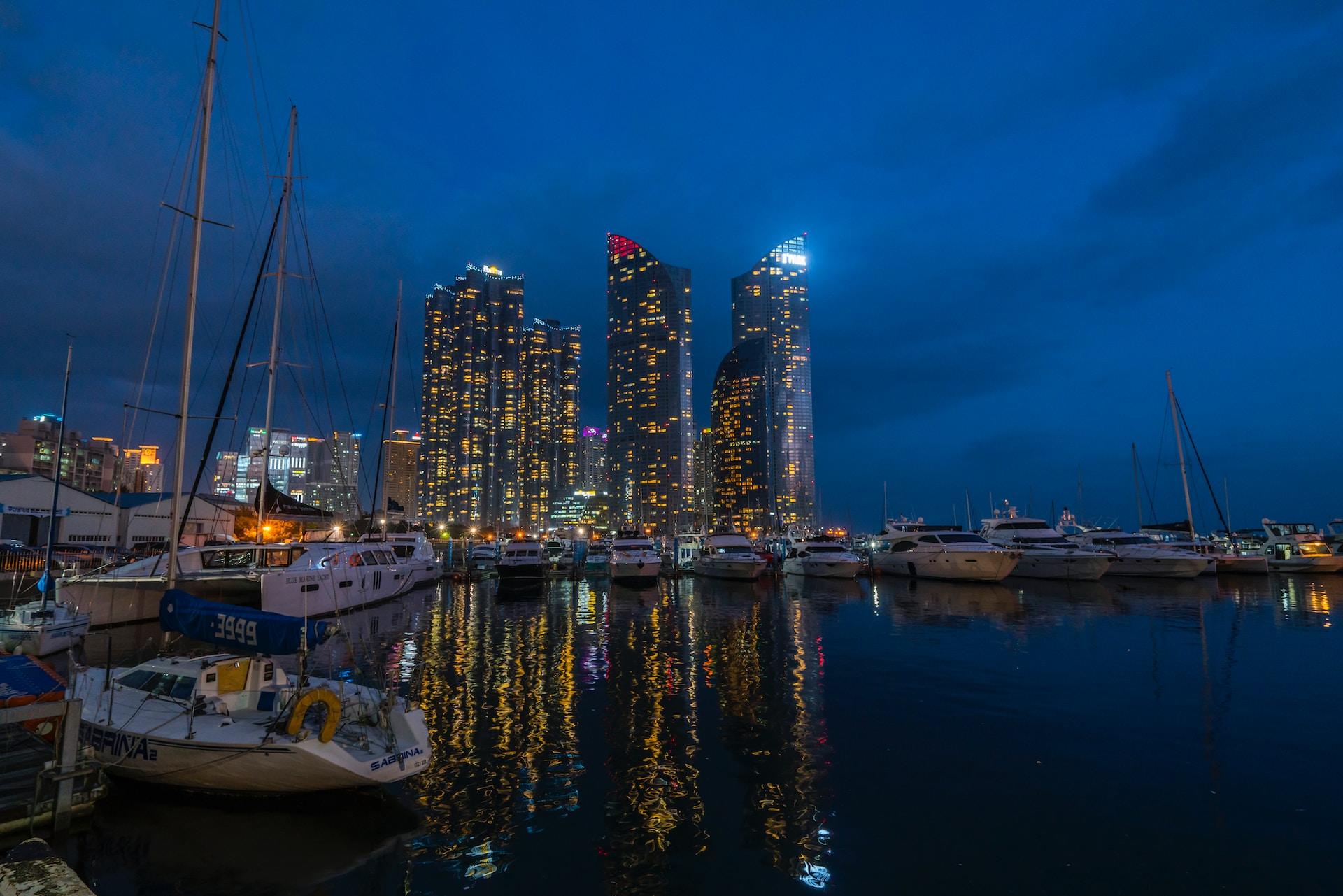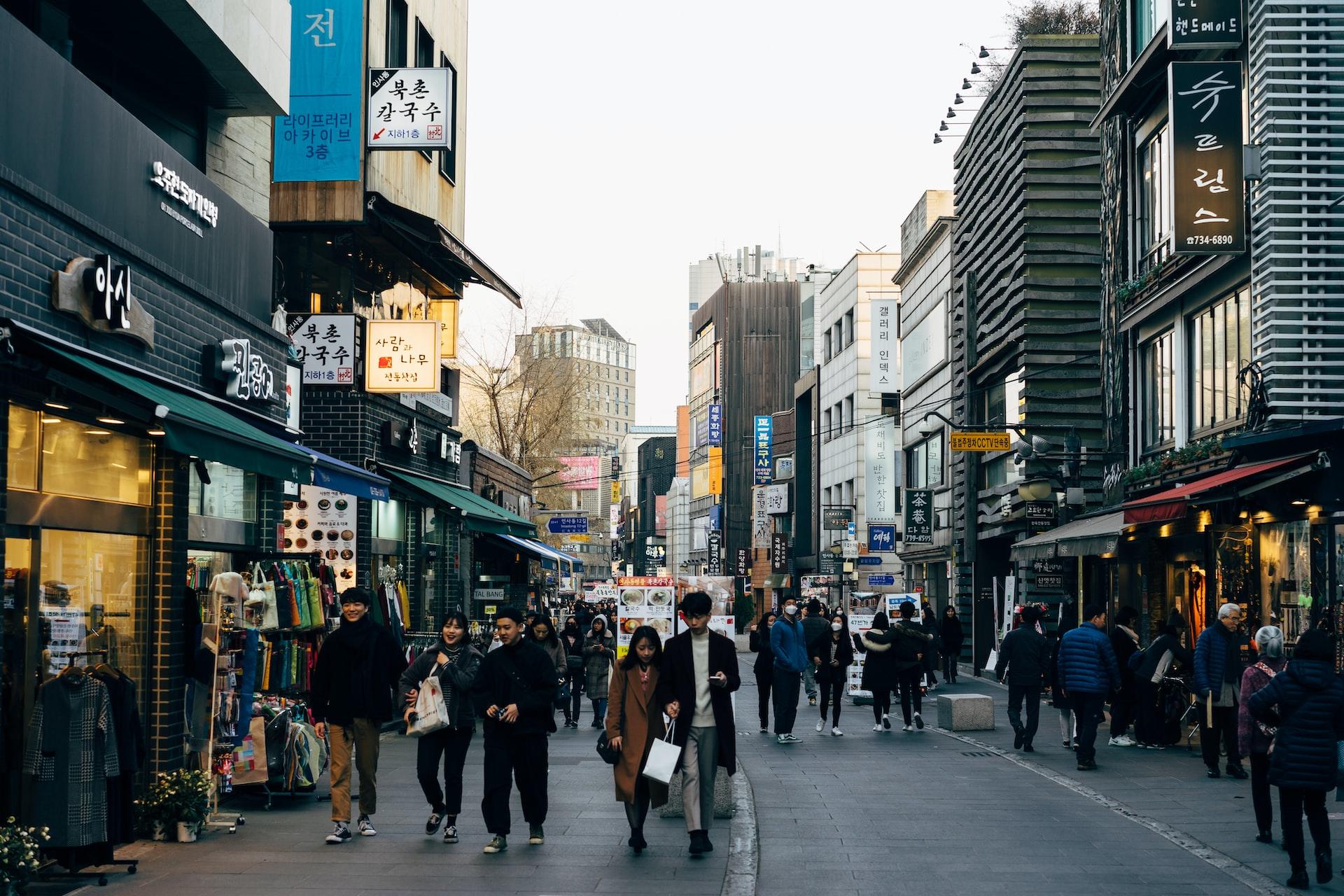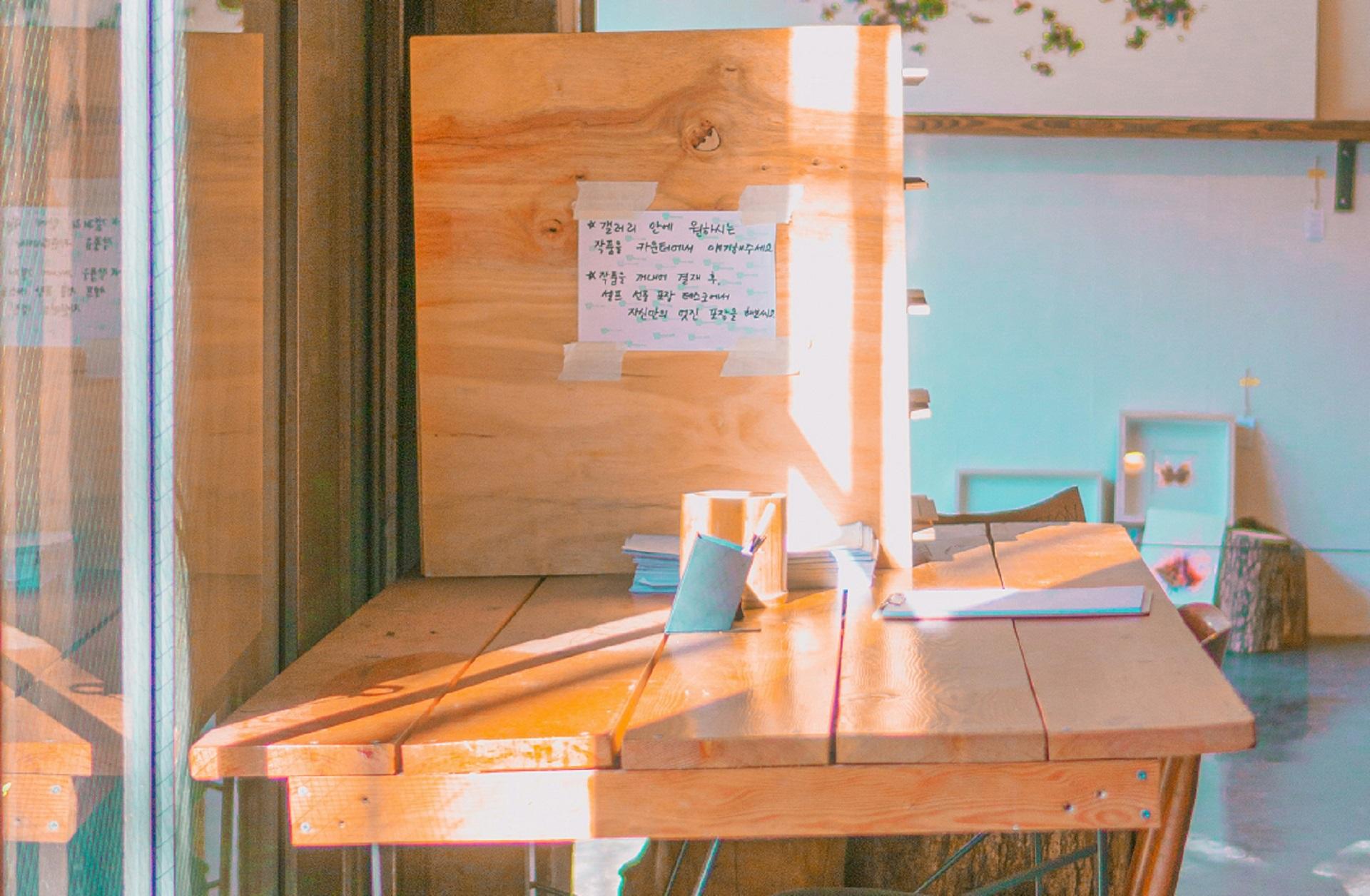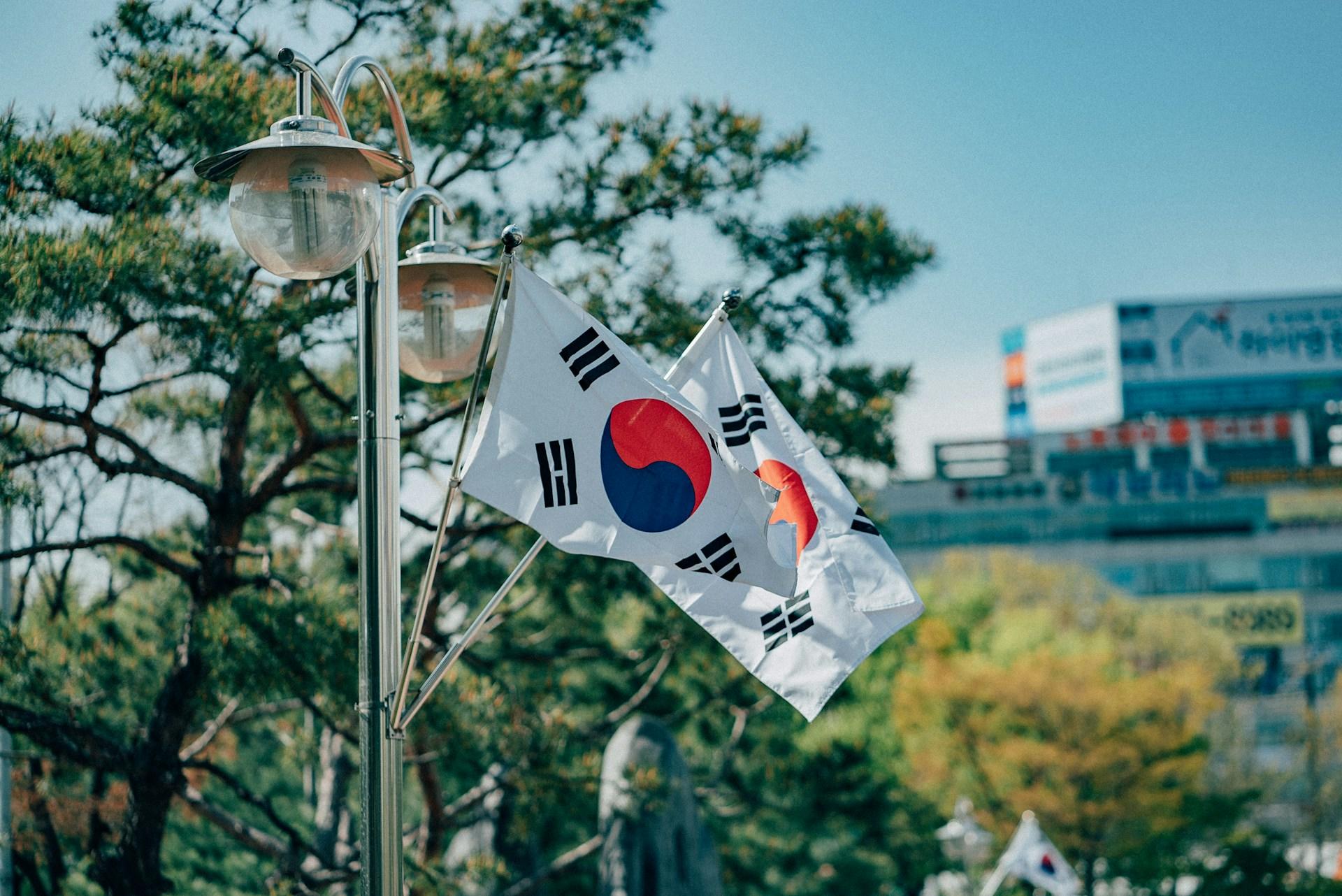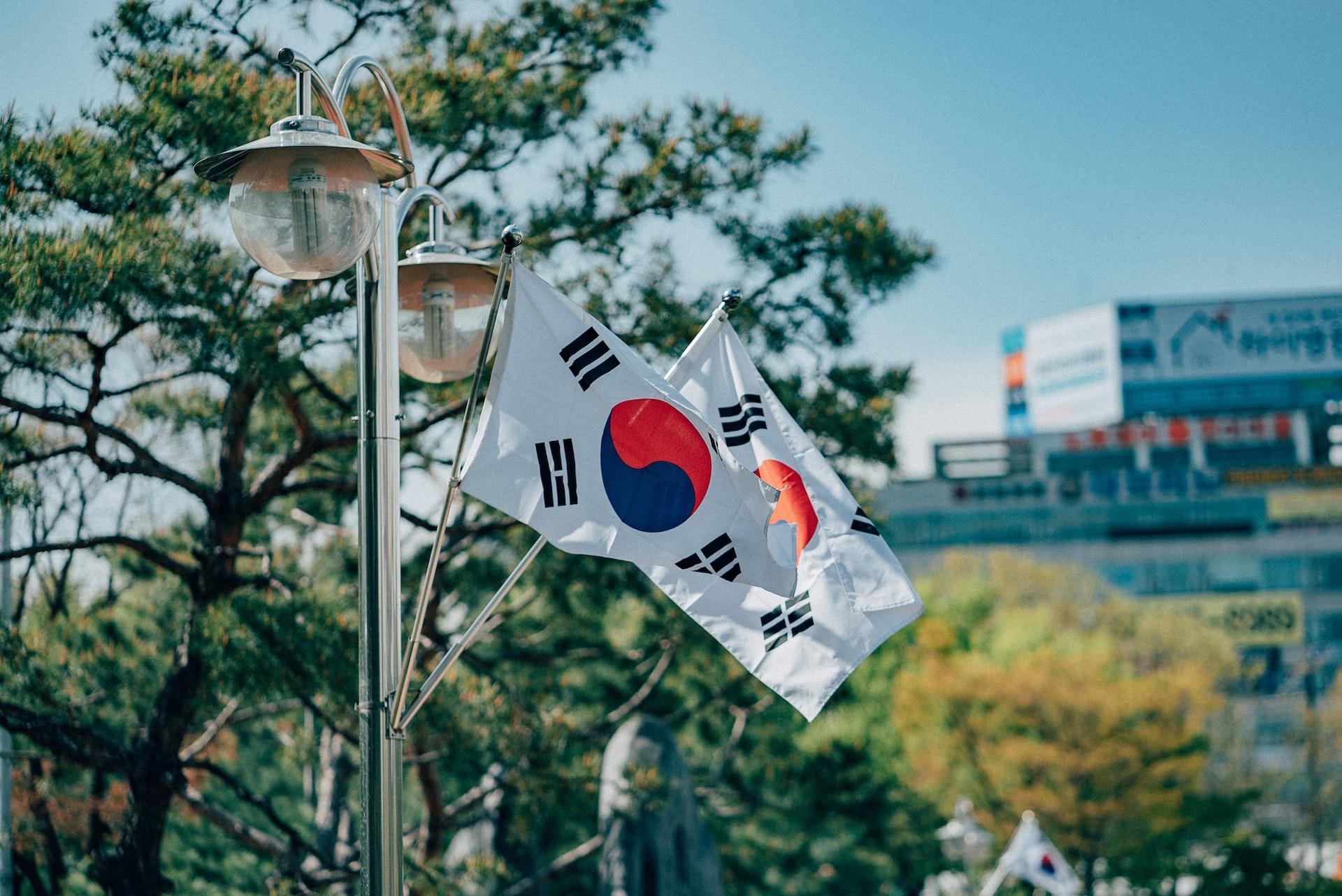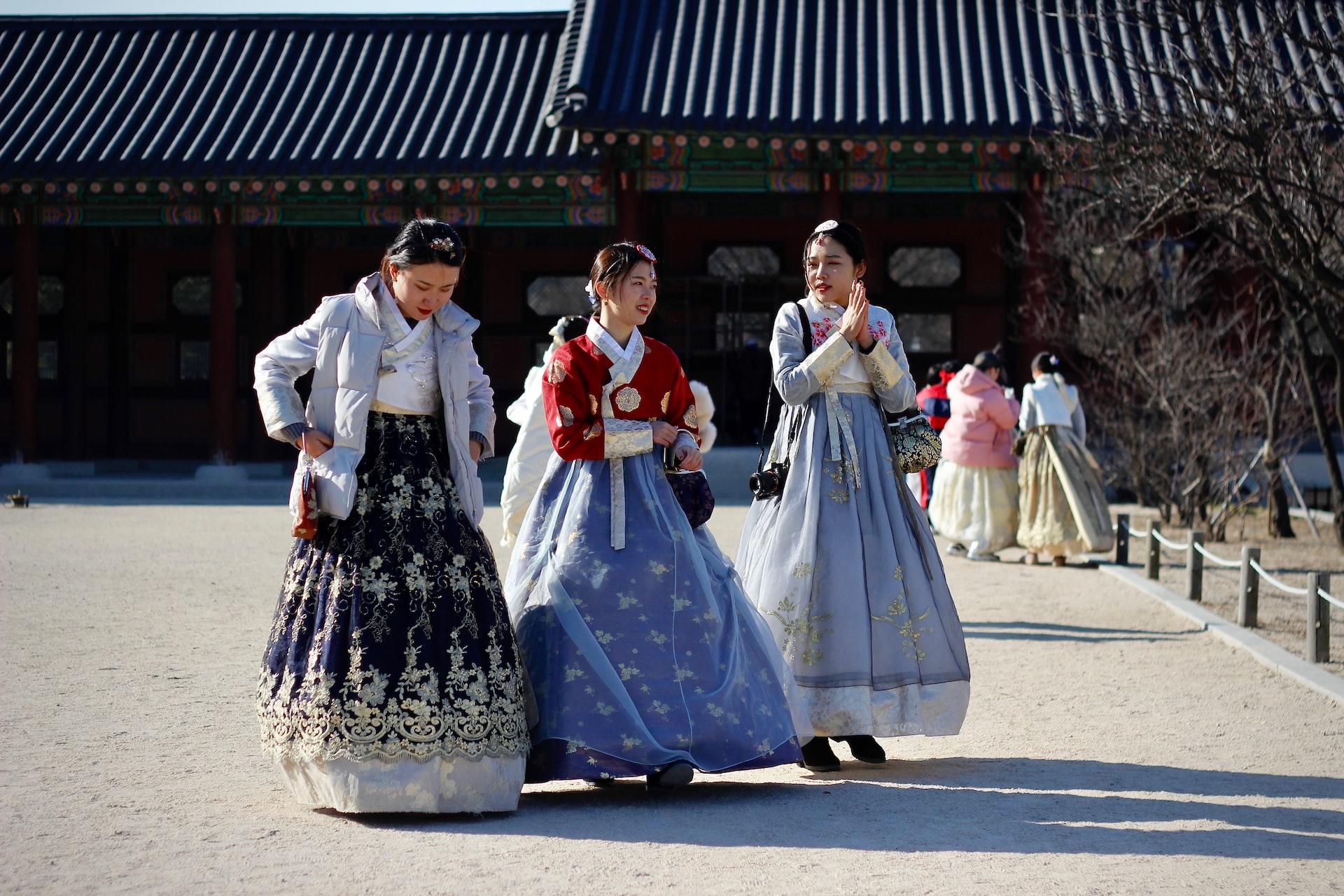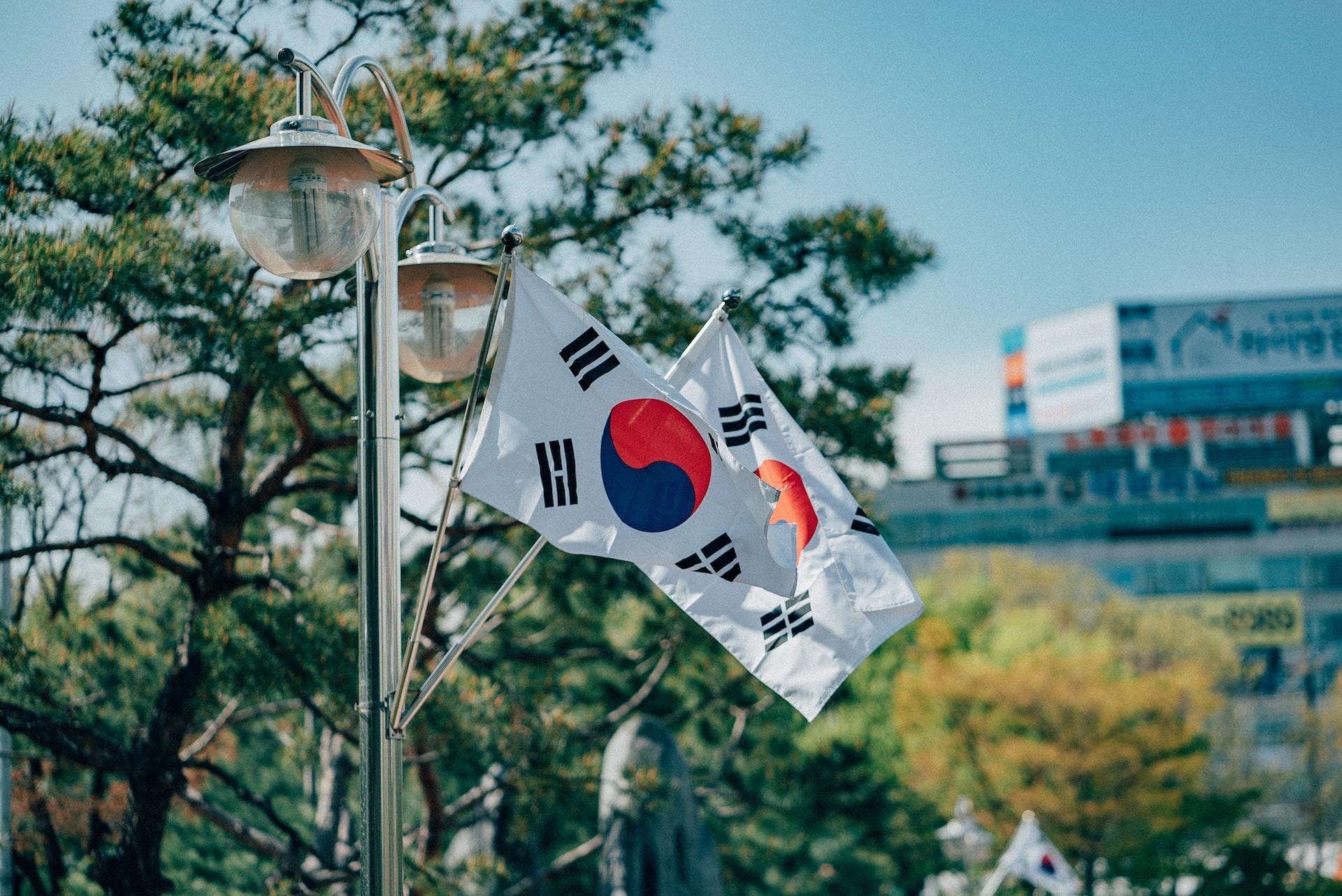The traveller is one who gives himself the time for meeting and exchanging.
Frédéric Lecloux
Organising a stay in a new destination can sometimes be a real headache. But travelling is one way to discover one's own sense of curiosity. From that perspective, Busan offers particular enticements.
international events in 2019, according to UAI
After Seoul, this city is the most travelled, even by South Korean tourists - and for good reason! From accommodations to temples, a trip to Busan guarantees a memorable sojourn. Do you need help organising your trip or are you still hesitant about taking the plunge? Let this guide help you decide!

The Top Ten Places to See in Busan
Busan is an essential tourist destination. Not just because it's South Korea's second-largest city but because it's a maritime city, as well. Busan has a lot to offer in the way of activities and discovery delights for every tourist.

Whether you spend a day or a week there, you'll find these ten sites among the most famous destinations. Travellers recommend that you put these high on your list:
The Gamcheon Cultural Village: the village of a million colours. Historically a slum, Gamcheon has become a must-see attraction. It's been nicknamed the Machu Picchu of Busan!
Haeundae Beach: the essential seaside destination. What a way to get away from urban noise for a day!
Taejongdae Park: essential for a nature getaway, to escape the tourist scene.
In 2021, South Korea submitted its application to host the 2030 World Expo in Busan.
Busan offers contrasting panoramas, whether visitors prefer strolling through nature or cultural experiences. Because in Pusan - another name for this charming city, no visit is complete without a temple visit.
The Haedong Yonggungsa Temple is a seaside Buddhist enclave. It's known for harbouring the Daeungjeon Sanctuary. By contrast, the Beomeosa Temple nestles in the mountains. Travellers appreciate this abode's authenticity and traditional architecture.
If culture is an essential part of visiting Pusan, it seems obvious that food must feature prominently in travellers' plans. Thus, we recommend Busan's Jagalchi Market, South Korea's biggest fish market. Seafood lovers, take notice!
Busan is also renowned among cinephiles and shoppers for BIFF Square. BIFF stands for Busan International Film Festival but it's a district where shopping plays a prominent role.

Far from the shops and temples, we find yet more delights. A ride on the metro will take you to two more essential Busan sites to see:
Gwangalli Beach or Gwangan Beach is a picturesque strand where you can enjoy a nice meal or have a glass of your favourite...
The Gwangan Bridge, also called Diamond Bridge is a Busan emblem. It's best seen at night, when it's all lit up.
Among the many Busan sites to see, these ten rank the highest among both native and international travellers. Once you've experienced them all, you can officially say you've seen this city from every angle!
The Best Accommodations in Busan
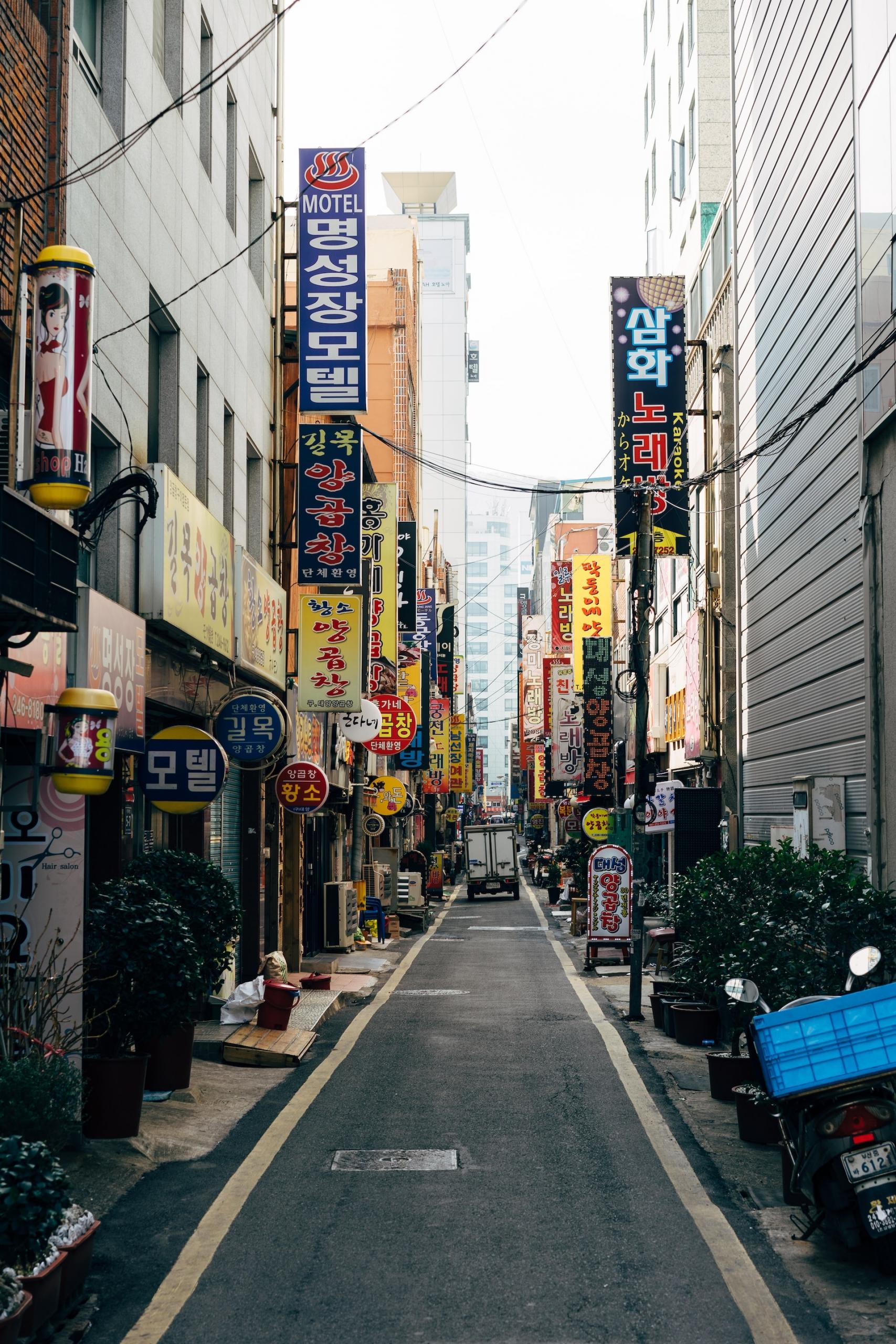
Once clear of the airport, a traveller typically dedicates their first minutes to settling in. They might choose a well-appointed hotel room, a hostel close to transportation networks or a homestay in city-centre.
Lodgings are a crucial aspect of travelling. In this regard as in all others, Busan does not disappoint!
| Lodging Type | Hostel | Temple | Public Bath | Hotel | Homestay |
| Price per Night | Between $25-60 | Between $85-125 | Around $15 | Starting at $67 | Between $58-195 |
| Pros | Low cost, lots of beds, much socialising | Unique experience | Atypical stay, lowest price | Comfort, wide selection | Authentic experience, socialising |
| Cons | Noisy, dormitory arrangement | Minimal comfort, strict rules | Noisy, little comfort | Depends on the facility | Lack of independence, strict rules |
5-star hotels in Busan
To succeed in finding the right quarters, you must also know which Busan districts suit your tastes the best. That relies in part on travellers' reviews but also on which flavour you wish your journey to have. You might prefer absorbing the culture rather than excursions into Busan's natural spaces, or simply to wallow on the beach. Busan has a district for each passion; no two are alike!
Among the most renowned districts travellers cite, we find:
Nampo-dong, where the aforementioned fish market is, as well as boutiques and Yongdusan Park.
Seomyeon: a business district that's often considered to be the city centre (it's not!).
Gamcheon: this is the most colourful and picturesque of Busan's districts. It perches high above the city and showcases lots of street art.
You can find accommodations in Busan's other districts, too:
- Dongnae, the 'hot springs' district
- Haeundae and Gwangalli: popular districts with beaches within minutes
- Gijang: a city suburb with beach access
- Yeongdo: an island where nature rules, connected to the mainland by a bridge
- Jung-gu: a central district replete with shops and restaurants.
Temples, hostels, homestays and hotels - you can even sleep in a Busan public bath! Where you lay your head is up to you and you don't have to choose just one. A night at the temple, a night with a family and then, off to the hotel. It's your choice!
How Much to Budget for Your Busan Visit?

Man cannot discover new oceans without having the courage to lose sight of the shore.
André Gide
Reserving plane tickets, securing your stash of wons and paying for train fare are all part and parcel of the South Korean pre-travel experience. Reserving your place on some excursions hits you in the wallet, too. In fact, exploring a new destination demands a hefty budget. Busan is not exempt from that rule.
For your sojourn in South Korea's second city, you must figure on certain expenses:
- Flying from Melbourne to Busan, you can find tickets for less than $1000, depending on the season and demand. Those variables influence ticket prices but the cited price is only an average fare. Travelling in peak season, you will likely pay far more to fly to South Korea.
- You'll not need a visa for a stay of less than 90 days but you should apply for your Korea Electronic Travel Authorization (K-ETA) to gain entry into the country. This document costs around $11 (10.000 Korean won).
South Korea calls its plan to relaunch its tourism sector "Visit Korea Year". To support the initiative, the government has suspended the K-ETA requirement from April 2023 until December 2024. If you travel in that window, Busan welcomes you even without that document!
So here you are, in Busan. The flight is over but not the expenses. Luckily, you have several options for where to sleep:
Hotel sleepers can get by for as little as $125 per night, on average. The full price range runs from $58 to $580.
For a homestay such as Airbnb, your average rate comes in just under $87 per night.
Spending the night in a backpacker hostel may cost as little as $38 per night.
You may splurge on a temple stay for around $125 a night.

Eating in Busan is less expensive than in Seoul but you won't necessarily get a good deal on your nutritional needs. Count on around £13 per meal during your Busan stay. You might get by on less if you frequent vendor stalls, though.
One of Busan's greatest assets is its numerous street vendors. You'll also find food stalls at the Jagalchi fish market and the Gukje market, too. Try'em all if you can!
But to get to the market, you have to know how to get there. Not just finding directions but the means of transportation. Busan has metros, buses and taxis; its transportation networks serve you very well. A one-way fare costs 1400 Krw; 1600 if you travel more than 10,5km. That's less than $2 to get where you want to go!
T-money is a rechargeable transport card you can use on the metro, the bus and even to pay for your taxis. You can buy your T-money card in neighbourhood grocery stores; it's for use in Busan as well as Seoul. Your T-money card costs 2500 Krw (about $2.9). Travellers report that using this card will see your one-way fare drop from the standard price to 1250 Krw!
If you want to take a taxi around Busan, count on your base fare being around 2800-3000 Krw. That's a bit less than $4. Note that you can use your T-money card to pay taxi fares, too. How convenient!

When you start thinking about all there is to see and do in Busan, you realise how culturally rich this city is. That means you should have enough room in your travel budget to experience as much of it as possible. Busan's greatest advantage is its closeness to nature; you'll find plenty to do that costs nothing at all. From the beaches (Haeundae, Gwangalli, Songjeong) to the parks (Dongbaek, Taejongdae, Igidae), you could enjoy the best Busan has to offer without spending a fortune.
Still, whether you have the Sea Life aquarium (30.000 Krw) or the Donggung Palace (3000 Krw) on your itinerary, it's best to plan on an average of $29-39 per day. That's a reasonable amount and you'll congratulate yourself for staying under budget if you don't spend it all!
Of course, your spending depends on your preferences. You hold all the cards when it comes to budgeting for your trip to Busan.
The Easy Route From Seoul to Busan
Once you settle on exploring South Korea, Busan may quickly become your target destination. Many travellers make their way through Seoul, too.
These adventurers can reach South Korea's capital city by train. The journey takes between 2h30 and 5 hours, depending on how you go.

| Transport | Price | Duration | Companies |
| Train | Starting at $50 one way | Between 2h30 and 5 hours | Korail |
| Plane | Starting at $50 one way | 1 hour | Jeju Air, Korean Air, Jin Air |
| Coach | Starting at $25 one way | 4 hours | Chunil Express, Samhwa, Dongyang Express, Joongang Express |
| Auto | Depends on mileage and rental company | Between 4 and 5 hours | Lotte rent-a-car, Avis, Alamo rent-a-car, Holiday Autos |
When asking yourself how to get from Seoul to Busan by the easiest means, the trains seem to be the best option. Just like our British rail system, trains in South Korea come in different 'types':
The KTX (Korean Train Express) is a lot like our rail system. The trip from Seoul to Busan is direct!
The ITX-Saemaul: a high-speed rail system, easily recognisable by its red-and-black cars.
Mugunghwa: a slower train, much like our intercity trains. They're much cheaper than the others.
To reserve your place online, you can direct yourself to Korail's website: https://www.letskorail.com/ (accessible in English). Or you could use a commercial ticket reservation platform like Rail Ninja.
But the train isn't your only means of transportation across South Korea! In fact, you can make your Busan connection by plane. Travel time is only one hour and the tickets start at around $50. Beware that they may climb as high as $175, though.
Different airlines compete for your business along the Seoul-Busan corridor:
Jeju Air
Korean Air
Jin Air
T'Way Airlines
Air Busan
Finally, if you'd rather ride into Busan on public transportation, a coach is your best option. Travel time may be as little as four hours on an express bus. That's how quickly Busan (or Seoul) could be yours to explore! These tickets range between $25 and $58, one way.
Leading transport companies for this journey include:
- Chunil Express
- Samhwa
- Dongyang Express
- Joongang Express
To reserve your ticket, access the Kobus platform. It's available in Korean and English.
The automobile is your last option to travel between Seoul and Busan. This classic transport mode is the simplest way to arrive at your destination. You'll have about four to five hours of travel ahead of you in a hired car from Lotte Rent-a-Car, Avis, Alamo Rent-a-Car, Holiday Autos, or your preferred car hire company. That's all there is to that!

You must be at least 21 years old and have a B permit for more than a year as well as an international driving permit - that's non-negotiable. You must also have your passport and a credit card.
In South Korea, the roads are generally wide open outside of the big cities. It could thus be intriguing to spend a few won to hire a car and hit the road. You'll feel free to pursue your Korean experience without every spent penny weighing you down!
Set itineraries can be pretty limiting; they have a way of hemming in the spirit of travel. Voyagers want to go farther than any guide recommends, give in to their thirst for adventure and allow their quest to explore free rein. Always with caution, of course! But isn't that what travel is all about?
So we leave you to it, with our best wishes for a memorable and satisfying trip to Busan!

